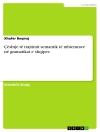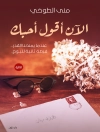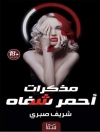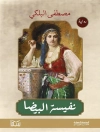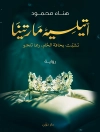The fourteen essays of this volume engage in distinct ways with the matter of motion in early modern Spanish poetics.
Los catorce ensayos de este volumen conectan de una manera perceptible con el tema del movimiento enla poesía española del siglo de oro
The fourteen essays of this volume engage in distinct ways with the matter of motion in early modern Spanish poetics, without limiting the dialectic of stasis and movement to any single sphere or manifestation. Interrogation of the interdependence of tradition and innovation, poetry, power and politics, shifting signifiers, the intersection of topography and deviant temporalities, the movement between the secular and the sacred, tensions between centres and peripheries, issues of manuscript circulation and reception, poetic calls and echoes across continents and centuries, and between creative writing and reading subjects, all demonstrate that Helgerson’s central notion of conspicuous movement is relevant beyond early sixteenth-century secular poetics, By opening it up we approximate a better understanding of poetry’s flexible spatio-temporal co-ordinates in a period of extraordinary historical circumstances and conterminous radical cultural transformation.
Los catorce ensayos de este volumen conectan de una manera perceptible con el tema del movimiento en la poesía española del siglo de oro, sin limitar la dialéctica de la estasis y movimiento a una sola esfera o manifestación única. Entre los multiples enfoques cabe destacar: el cuestionamiento de la interdependencia de la tradición e inovación, de la poesía, del poder y la política, de los sigantes que se transforman, de los espacios que conectan y cruzan con los tiempos ‘desviados’; análisis de las tensiones entre lo sagrado y lo secular, del conflicto centro-periferia y del complejo sistema de producción, circulacióny recepción de los manuscritos; el diálogo con el eco poético a través de los siglos y de los continentes y la construcción creativa del sujeto escritor y/o lector. Al abrir la noción central de Helgerson del ‘movimiento cono’ más allá de la poesía nueva secular, este libro propone un entendimiento más completo de las coordinadas espacio-temporales de la poesía en un periodo de circunstancias históricas extrao
Jean Andrews is Associate Pssor in the Department of Spanish, Portuguese and Latin American Studies, University of Nottingham.
Isabel Torres is Professor of Spanish Golden Age Literature at Queen’s University, Belfast.
Contributors: Jean Andrews, Dana Bultman, Noelia Cirnigliaro, Marsha Collins, Trevor J. Dadson, Aurora Egido, Verónica Grossi, Anne Holloway, Mark J. Mascia, Terence O’Reilly, Carmen Peraita, Amanda Powell, Colin Thompson, Isabel Torres
Cuprins
Introduction
La poesía mutante del Siglo de Oro
Moving in. . . .Garcilaso de la Vega’s ‘Dulces prendas por mi mal halladas’ – Isabel Torres
The Movement of Thought and Feeling in the ‘Ode to Juan de Grial’
Metaphors of Movement in Two Poems of Fray Luis de León
El tiempo medido en versos: Camila Lucinda en las
Rimas [1609] de Lope de Vega
Upwards to Helicon: Lope de Vega, the
Laurel de Apolo, and Acts of Judgment
‘Dulce es refugio’: el peregrino de Góngora se detiene
The Staging of Góngora’s Three Funereal Sonnets for Margarita de Austria Estiria
Jealousy in María de Zayas’s Intercalated Poetry: Lyric Illness and Narrative Cure
Hacia otra lectura del petrarquismo en Sor Juana Inés de la Cruz
El conde de Salinas y Leonor Pimentel: cuando se juntan el amor y la poesía
Poesía popular en movimiento: los jeroglíficos ‘muy propios al intento y muy de su profesion’ en las celebraciones de la Valencia barroca
Responding to Góngora: María Rosal and the Clori Poems
Traveling in Place: Baroque Lyric Transports in Translation, or Flames that Bridge the Stream
Works Cited


